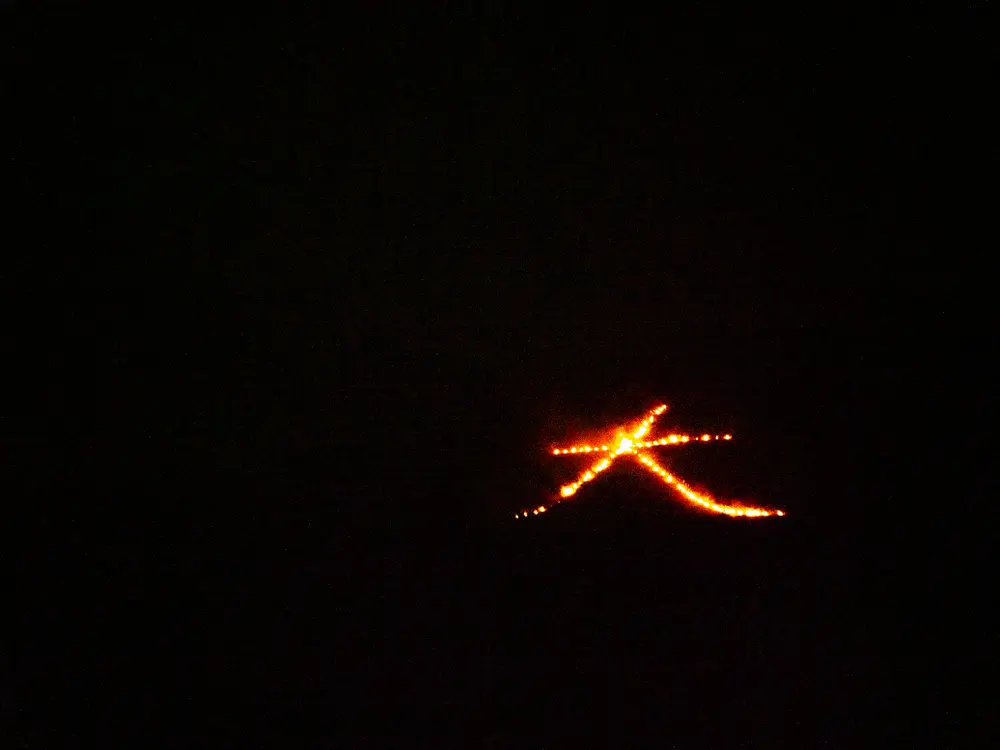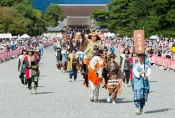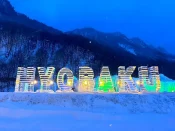Kyoto’s Gozan no Okuribi: Witness the Enchanting Bonfire Ritual Illuminating the Summer Night Sky
Imagine standing on a hillside in Kyoto, the air filled with the rhythmic beat of drums and the chanting of sutras. As dusk settles, five massive bonfires ignite on the surrounding mountains, their fiery glow casting dancing shadows against the darkening sky. This is Gozan no Okuribi, a breathtaking spectacle that marks the end of Obon, a Japanese Buddhist festival honoring ancestral spirits.
The History and Spiritual Significance of Gozan no Okuribi
Gozan no Okuribi, also known as Daimonji (meaning “big character”), is a centuries-old tradition deeply rooted in Buddhist beliefs. It is believed that during Obon, ancestral spirits return to the earthly realm to visit their living relatives. On the final night of Obon (August 16th), the bonfires are lit to guide the spirits back to the spirit world.
Each of the five bonfires has a unique shape, representing a different character or symbol:
Daimonji (大)
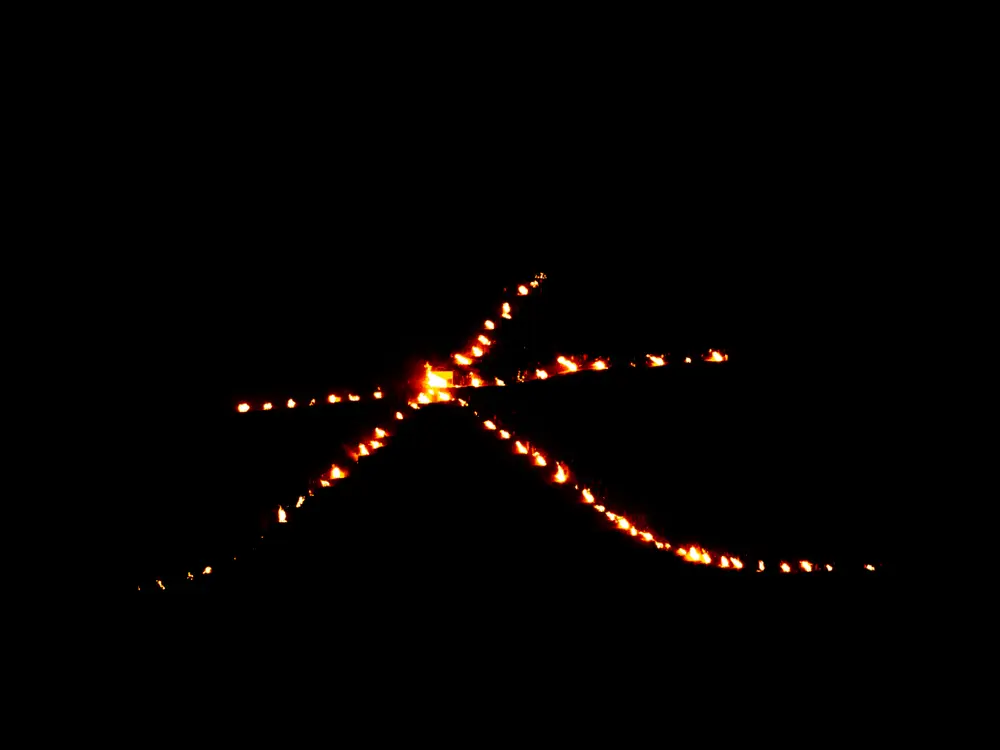
The largest bonfire, shaped like the character for “large” or “great.”
Myoho (妙法)
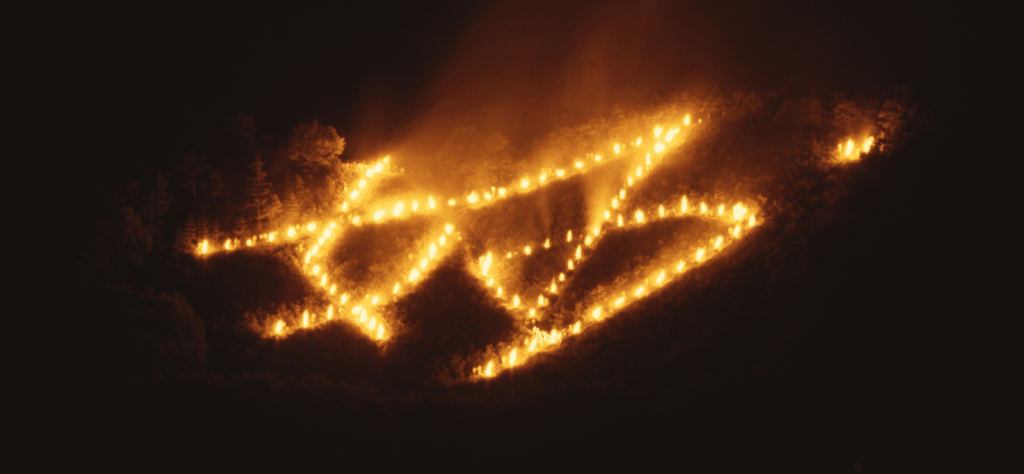
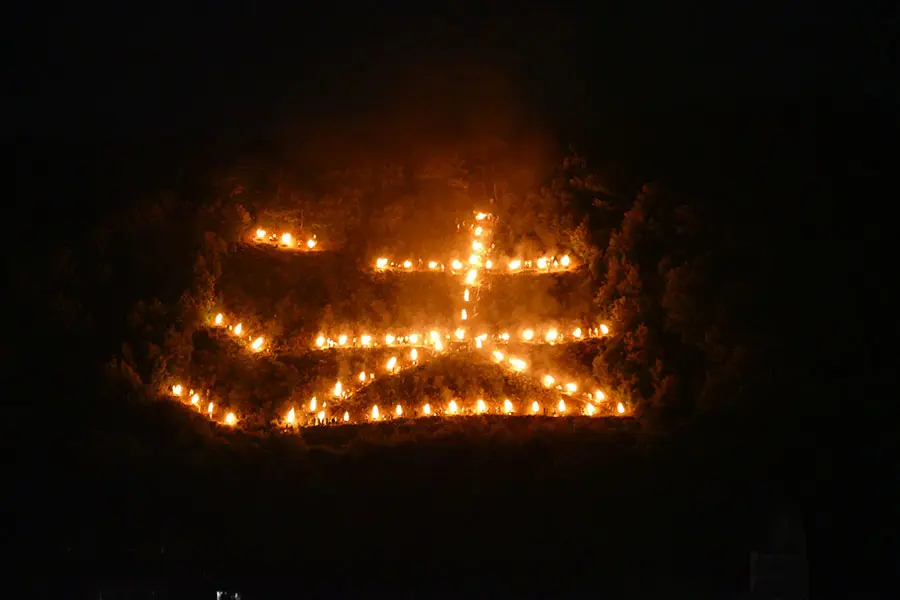
Shaped like the characters for “mysterious” or “wonderful law.”
Funagata (船形)
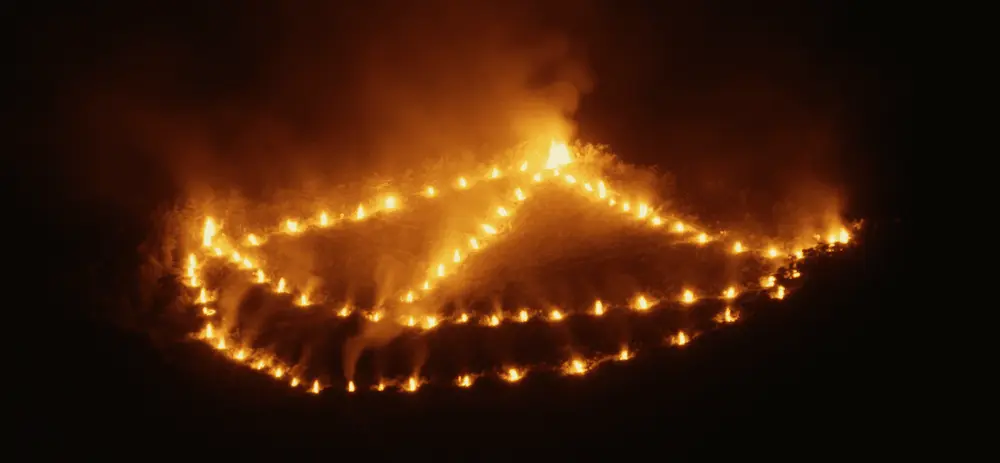
Shaped like a boat, symbolizing the journey of the spirits back to the other world.
Hidari Daimonji (左大文字)
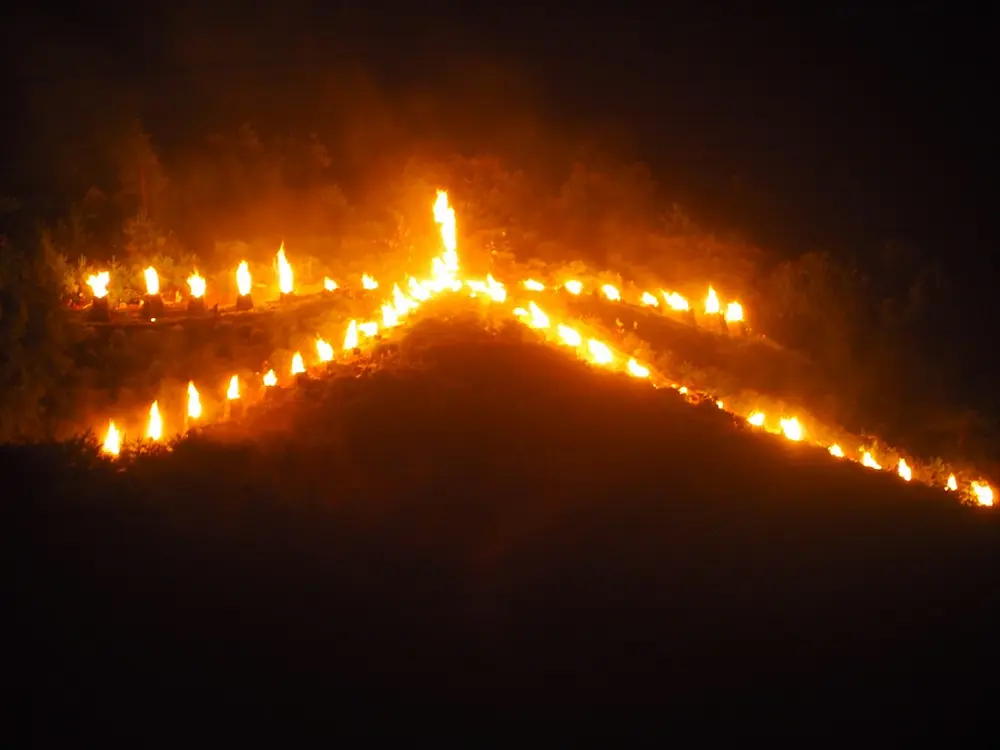
A smaller version of the Daimonji, located to the left of the original.
Torii-gata (鳥居形)
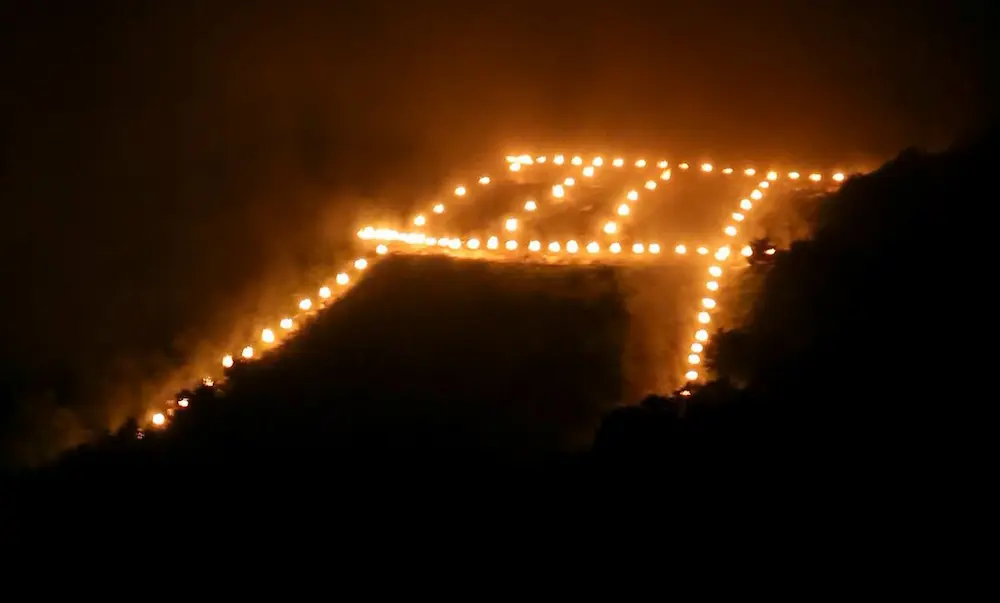
Shaped like a torii gate, the traditional entrance to a Shinto shrine.
The bonfires are meticulously constructed using wood and other combustible materials, and their ignition is a carefully choreographed event, with each fire being lit at a specific time.
The Five Mountains and Their Unique Bonfires
The five bonfires are lit on five different mountains surrounding Kyoto.
- Daimonji: Nyoigatake
- Myoho: Matsugasaki
- Funagata: Nishiyama
- Hidari Daimonji: Daihoku-san
- Torii-gata: Mandara-san
Each mountain offers a unique vantage point for viewing the bonfires, with some offering panoramic views of the entire cityscape.
Viewing Spots and Tips for Visitors
To get the best view of the bonfires, consider visiting some of the popular viewing spots:
1.Daimonji (大文字)
Recommended Spot: The banks of the Kamo River near Demachiyanagi Station. This spot offers a clear and unobstructed view of the Daimonji bonfire.
2.Myoho (妙法):
Recommended Spot: The Kitayama area. Specifically, around Kitayama Street, you can find great vantage points for viewing both characters “Myo” and “Ho”.
3.Funagata (舟形):
Recommended Spot: Kami Gamo Bridge. This area provides a good view of the boat-shaped bonfire.
4.Hidari Daimonji (左大文字):
Recommended Spot: From the intersection at ‘Kinkakuji-mae,’ you can get a good view of Hidari Daimonji from both Nishi-oji Street and Kita-oji Street.
5.Toriigata (鳥居形):
Recommended Spot: You can get a good view of the Torii-gata okuribi (bonfire) from the north side of Seiryo-ji Temple.
Booking your accommodation well in advance is crucial, as the event draws large crowds. Staying in central Kyoto or near the popular viewing spots will make it easier to navigate the city. Be sure to try local foods from street vendors during the event; traditional Obon festival treats include yakitori, taiyaki, and kakigori (shaved ice).
Experiencing Gozan no Okuribi in Kyoto
Gozan no Okuribi takes place on August 16th, starting around 8:00 PM. Here are a few ways to experience this magical event:
- Organized viewing events: Several hotels, restaurants, and tour companies offer special viewing packages that include food, drinks, and commentary.
- Public viewing areas: There are several free public viewing areas, such as Kiyomizu-dera Temple and the banks of the Kamogawa River.
- Boat cruises: Enjoy a unique perspective of the bonfires from a boat cruise on the Kamogawa River.
No matter how you choose to experience Gozan no Okuribi, be sure to arrive early to secure a good spot. The event attracts large crowds, so it’s best to plan ahead.
Beyond the Bonfires: Other Obon Traditions in Kyoto
While Gozan no Okuribi is the main event, Kyoto offers other Obon traditions worth exploring:
- Toro Nagashi: This floating lantern ceremony takes place on the Kamogawa River on August 16th. Lanterns are released into the river to guide the spirits of the departed.
- Bon Odori: This traditional folk dance is performed at temples and shrines throughout Kyoto during Obon. Visitors are welcome to join in the dancing.
Conclusion
Kyoto’s Gozan no Okuribi is a mesmerizing spectacle that combines ancient traditions with breathtaking natural beauty. It’s a time for reflection, remembrance, and renewal. Whether you’re drawn to its spiritual significance or simply want to witness a unique cultural event, Gozan no Okuribi is an experience you won’t soon forget.
Reviews
There are no reviews yet. Be the first one to write one.
